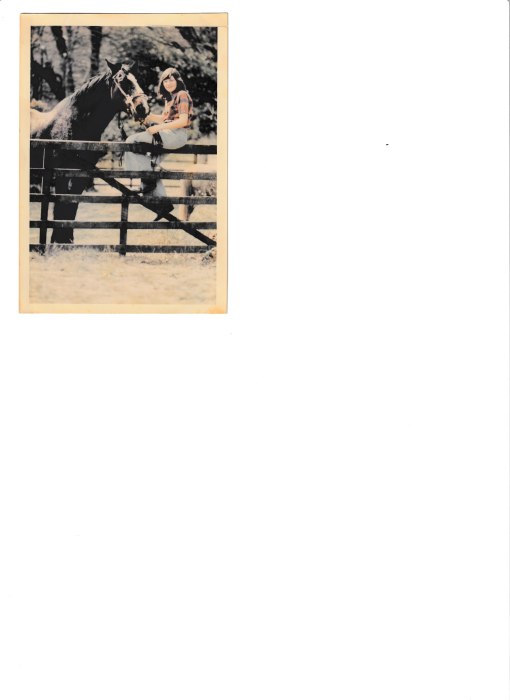Paddy was the first horse I cared for and rode entirely on my own. He belonged to a local doctor, who didn’t have time to exercise him regularly due to his commitments as a GP. I’d already learned to ride, taught by a friend who became a professional equestrian, but mostly by galloping up and down green lanes on eager ponies, with the occasional outing to a cross country trial or show. Riding Paddy couldn’t have been more different.
For a start, there was his size. As a 13-year-old, I was just over 5ft, and Paddy was a dinosaur at around 17hh. Most of our time together involved me looking for gates or walls high enough to climb onto his back. Once onboard, though, I loved the feeling of protection he gave me. He lifted his huge feet carefully and glided along as if he were wading through deep water. His rolling rhythm was deeply reassuring and even though I probably would have preferred a perky pony of my own, I came to love Paddy deeply.
Paddy was the first horse I truly considered a friend. I felt Paddy was deeply lonely and that our time together somehow made his life seem a little brighter; I know he certainly brought warmth and reassurance to my own period of teenage anxiety and isolation. When I was with Paddy, I somehow felt less afraid, less churned up inside, and able to relax and enjoy each moment without worry. When I was stressed about something at school, I would think about Paddy’s huge presence and feel calmer.
This week I was privileged to attend a conference organised by the Blue Cross in London, during which the animal welfare charity launched a report on the links between tackling mental health, poverty and loneliness through animal companionship.
The report highlighted the ways that cats, dogs, horses and other animals could improve well-being through providing love and company, motivation and purpose, a sense of trust, distraction from symptoms, increased social interaction, exercise and humour. The report showed how pets bring meaning to lives and help people to maintain a positive view of the self, the world and their future.
During the day, there were many moving stories and films from people who had become homeless or had been in mental health crisis who shared that their pet was their only source of love and support. A poignant 56% of people said they considered their pet their best friend. For some people surveyed, without the need to live for their animals, they might have considered suicide. Animals are literally a lifeline for many. The report also pointed out that ‘shockingly people with severe and prolonged mental illness are on average at risk of dying 15 to 20 years earlier than people without such an illness.’
The Blue Cross supports pet owners in times of need, and their work is inspiring because they understand that looking after the welfare needs of animals means understanding the welfare needs of the people who care for these animals. The Blue Cross report makes many sound recommendations, including investing in more mental health training for their own staff and that NHS mental health trusts commission evaluations on animal assisted therapies, but the one that strikes me most is the recommendation that the mental health service user’s relationship with their pets should be included in any psychological and psychiatric assessments and included in any care or crisis plan by Community Mental Health Teams.
After the conference, I passed many people who will spend their winter on the streets of London with a devoted dog by their side. I remembered the story of Wully. After his girlfriend died and the council refused to pass on the tenancy of the flat they shared, Wully started living on the streets of London with his two dogs, drinking up to four bottles of strong cider a day. He was seen by the staff at Mayhew who persuaded him to put his dogs into their Pet Refuge Programme so that Wully could go into rehab. It took him two tries, but Wully ended up clean and now works as a healthcare advocate for the homeless.
Zoe Edwards, Head of Animal Welfare at Mayhew, said: ‘I remember going to see him a couple of years after, as he was one of my ongoing welfare cases, and he gave me £100 that he had raised for Mayhew, which was so good of him. I am extremely proud of Wully, he is a lovely kind man and it was a privilege to help him and his two lovely Staffies.’
This story inspires me because it shows society operating at its best. When a person has lost their relationship, their home and their livelihood, losing their dog or their cat, is utterly devastating and compounds their sense of loss and loneliness. A truly compassionate society must find ways to sustain the animal friendships that for many isolated and vulnerable people are a vital link to life.

Leave a comment